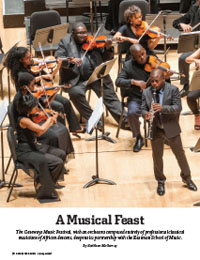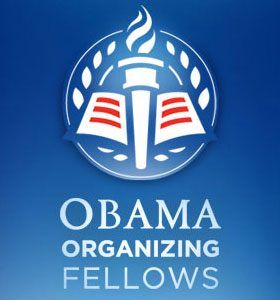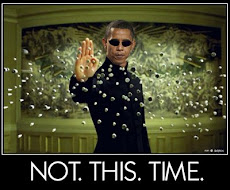Saturday, December 29, 2018
Friday, December 28, 2018
KWANZAA -- Habari Gani!
Kwanzaa
Is an African American and Pan-African holiday celebrated by millions throughout the world African community, Kwanzaa brings a cultural message which speaks to the best of what it means to be African and human in the fullest sense.
The celebration honors African heritage in African-American culture and is observed from December 26 to January 1, culminating in a feast and gift-giving.
Kwanzaa has seven core principles, the Nguzo Saba. It was created by Dr. Maulana Karenga and was first celebrated in 1966–67.
The term “Kwanzaa” comes from the Swahili phrase “matunda ya kwanza,” which translates to “first fruits.” Kwanzaa recognizes the significance of African heritage, family and community.
The Nguzo Saba:
Umoja: Unity. To strive for and maintain unity in the family, community, nation, and race.
Kujichagulia: Self-Determination: ...
Ujima: Collective Work and Responsibility. ...
Ujamaa: Cooperative Economics. ...
Nia: Purpose. ...
Kuumba: Creativity. ...
Imani: Faith.
The Black Candle [HD] (Official Kwanzaa Film) Narrated by Maya Angelou
“For Africa to me... is more than a glamorous fact. It is a historical truth. No man can know where he is going unless he knows exactly where he has been and exactly how he arrived at his present place.” - Maya Angelou
“We all should know that diversity makes for a rich tapestry, and we must understand that all the threads of the tapestry are equal in value no matter what their color.” - Maya Angelou
The [Kwanzaa] holiday, then will of necessity, be engaged as an ancient and living cultural tradition which reflects the best of African thought and practice in its reaffirmation of the dignity of the human person in community and culture, the well-being of family and community, the integrity of the environment and our kinship with it, and the rich resource and meaning of a people’s culture.” - Dr.Maulana Karenga
“Our children need the sense of specialness that comes from participating in a known and loved ritual. They need the mastery of self-discipline that comes from order. They need the self-awareness that comes from a knowledge of their past. They need Kwanzaa as a tool for building their future and our own.” -
Jessica Harris
The Story Of Kwanzaa: From Civil Rights To Corporate America
Quaver Music's "Kwanzaa Celebration"
Happy Happy Kwanzaa
https://chicago.suntimes.com/news/kwanzaa-2018-begins-wednesday-december-26-january-1/
http://www.officialkwanzaawebsite.org/index.shtml
https://pasadenajournal.com/kwanzaa-fact-sheet/
https://en.wikipedia.org/wiki/Kwanzaa
k
Friday, December 14, 2018
NANCY WILSON – The Very Thought Of You (1964, HD)
Farewell to one of my very favorite singers and the first jazz artisit I came to love and learn from her vocalizations in my early adult life. I believed -- and still do -- that no one can actually "touch" her in her artistry with graceful enumciations and vocalized swirls along the sound spectrum. Her enunciation is effortless, and her tonal quality remains precious and sterling in comparison to other jazz singers both male and female. May her glorious renditions be revered for their spectacularity (?) (ness?) over time. Rest gloriously in Jazz Heaven, Nancy Wilson. May we all hear and listen to you "in the Morning . . . ."
Monday, October 29, 2018
Friday, October 26, 2018
I AM A CHRISTIAN
I AM A CHRISTIAN By Maya Angelou
When I say... "I am a Christian"
I'm not shouting "I'm clean livin."
I'm whispering "I was lost,"
Now I'm found and forgiven.
When I say..."I am a Christian"
I don't speak of this with pride.
I'm confessing that I stumble
and need CHRIST to be my guide.
When I say... "I am a Christian"
I'm not trying to be strong.
I'm professing that I'm weak
and need HIS strength to carry on.
When I say... "I am a Christian"
I'm not bragging of success.
I'm admitting I have failed
and need God to clean my mess.
When I say... "I am a Christian"
I'm not claiming to be perfect,
My flaws are far too visible
but, God believes I am worth it.
When I say... "I am a Christian"
I still feel the sting of pain,
I have my share of heartaches
So I call upon His name.
When I say... "I am a Christian"
I'm not holier than thou,
I'm just a simple sinner
who received God's good grace, somehow
Friday, October 19, 2018
Sunday, September 30, 2018
Friday, September 7, 2018
Monday, September 3, 2018
Saturday, September 1, 2018
Wednesday, August 29, 2018
Tuesday, August 28, 2018
Monday, August 13, 2018
Tuesday, July 10, 2018
Sinbad On Mo'Nique, His Distaste For Justin Timberlake + More
You have to listen to this to the end because Sinbad covers such a variety of cogent topics that you would be proud and enlightened just to listen to his wisdom and in a humorous manner. This is a great find. Enjoy fully!
Monday, July 9, 2018
Saturday, June 16, 2018
Features
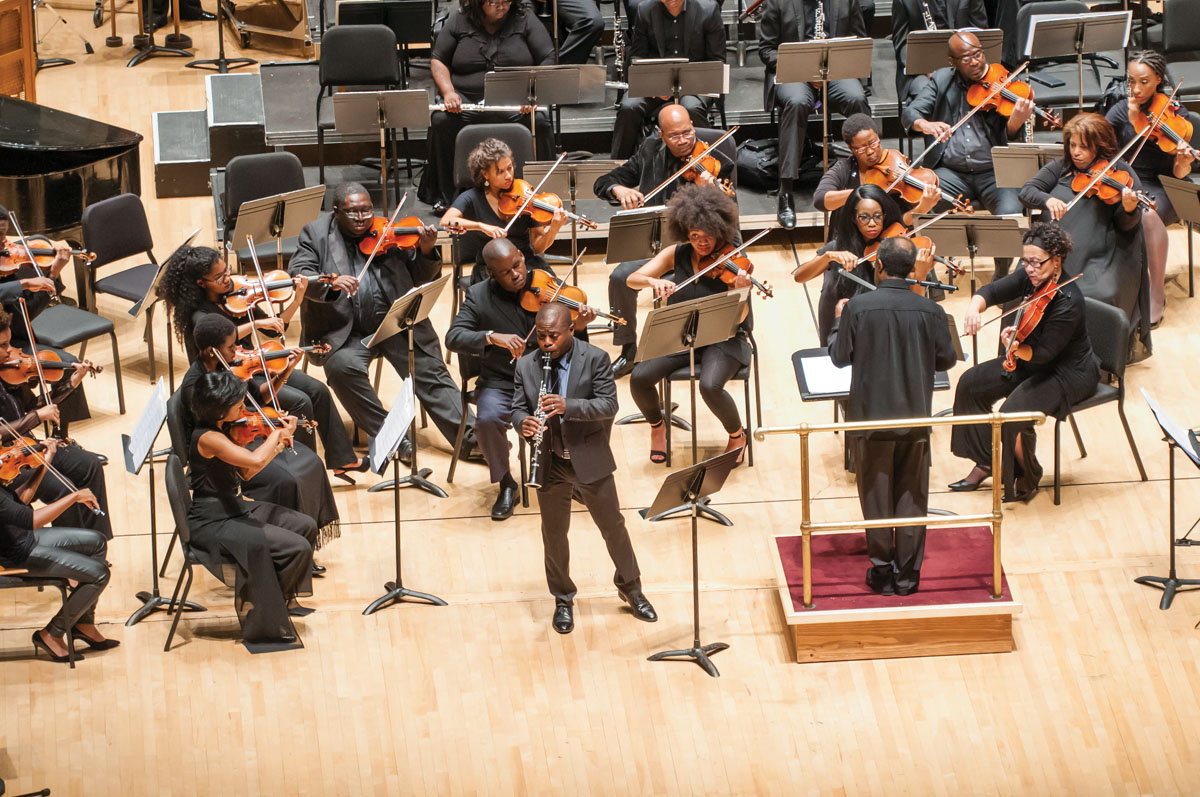 IN PERFORMANCE: Anthony McGill, the principal clarinetist of the New York Philharmonic, took center stage at the 2015 Gateways Music Festival, playing a concerto with the festival’s orchestra. (Photo: Keith Bullis for University Communications)
IN PERFORMANCE: Anthony McGill, the principal clarinetist of the New York Philharmonic, took center stage at the 2015 Gateways Music Festival, playing a concerto with the festival’s orchestra. (Photo: Keith Bullis for University Communications)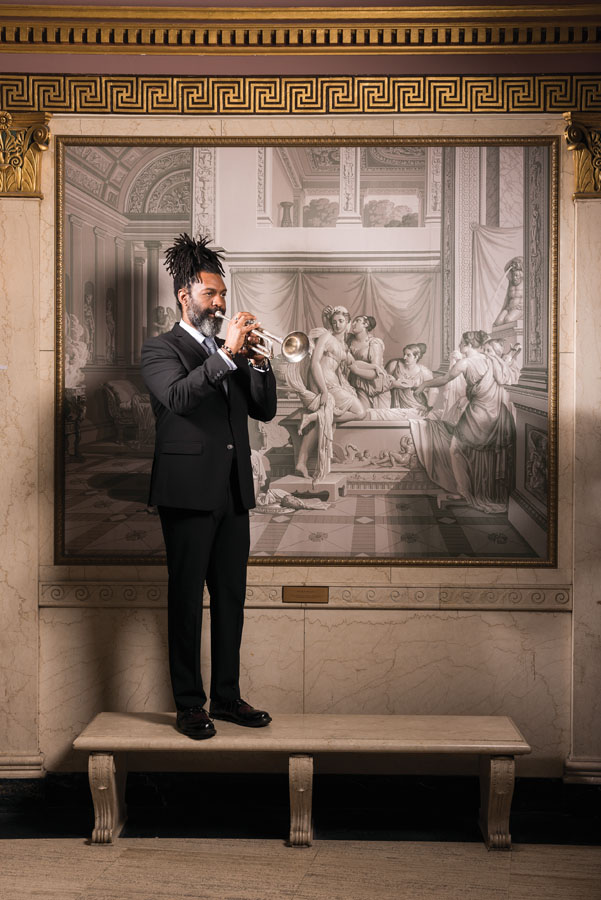 ATTUNED: “Orchestras across the country should play this music,” says Rochester Philharmonic Orchestra trumpeter Herb Smith ’91E of the pieces by composers of African descent that are part of the Gateways repertoire; classical pianist Armenta Adams Hummings Dumisani (below, left) developed the festival more than two decades ago. Paul Burgett ’68E, ’76E (PhD), chair of the festival’s board, calls her a “musical activist.” (Photo: Adam Fenster)
ATTUNED: “Orchestras across the country should play this music,” says Rochester Philharmonic Orchestra trumpeter Herb Smith ’91E of the pieces by composers of African descent that are part of the Gateways repertoire; classical pianist Armenta Adams Hummings Dumisani (below, left) developed the festival more than two decades ago. Paul Burgett ’68E, ’76E (PhD), chair of the festival’s board, calls her a “musical activist.” (Photo: Adam Fenster)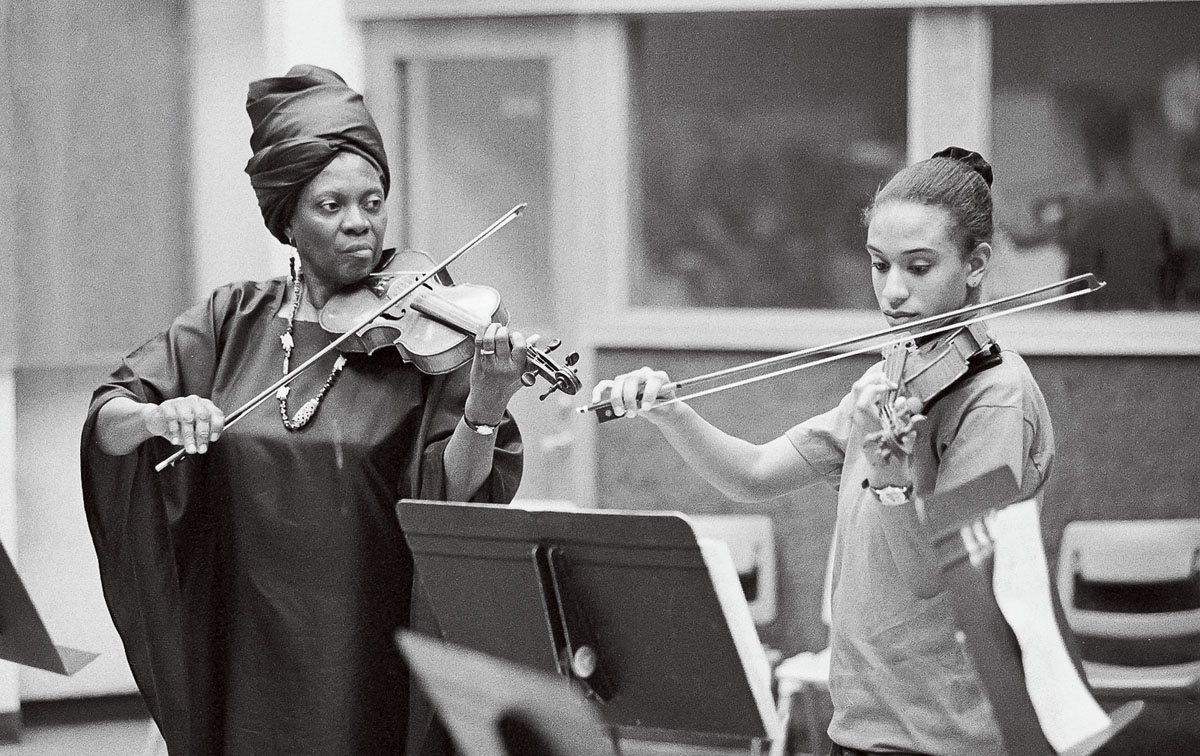 (Photo: University Libraries/Department of Rare Books, Special Collections, and Preservation)
(Photo: University Libraries/Department of Rare Books, Special Collections, and Preservation)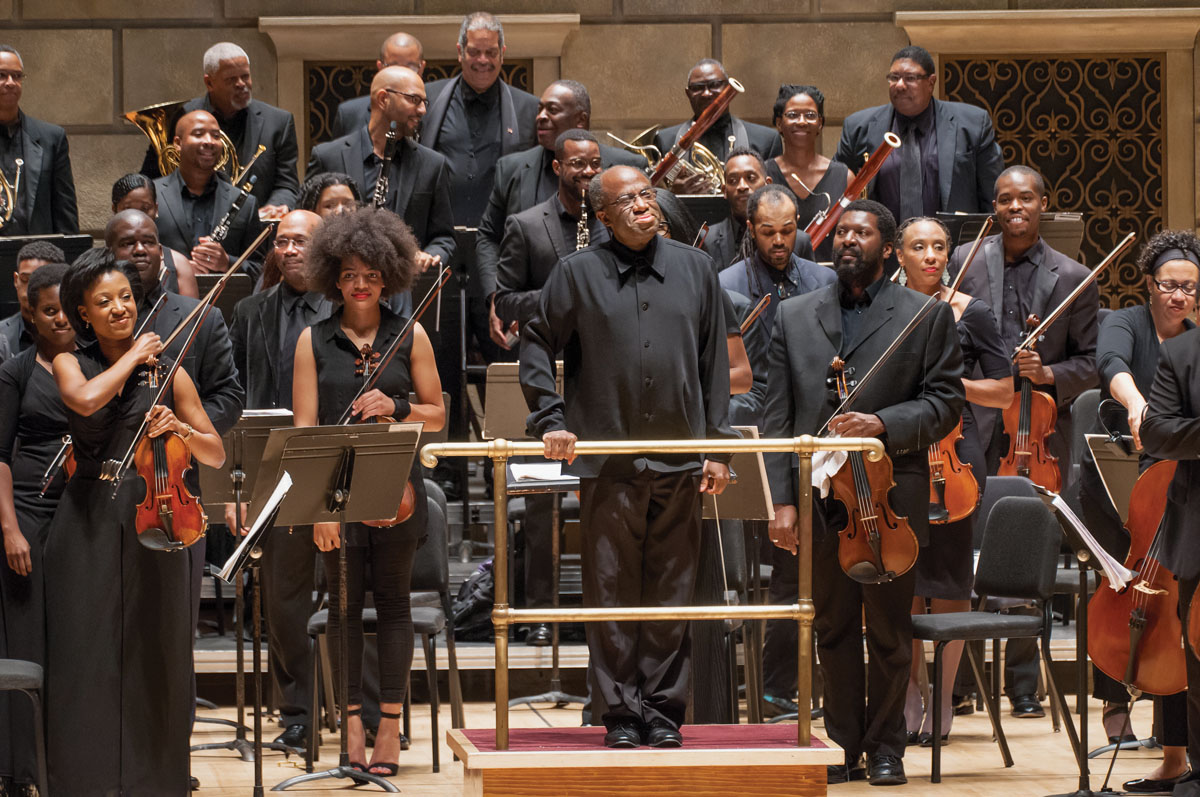 STANDING OVATIONS: Concert master Kelly Hall-Tompkins ’93E (above, left), conductor Michael Morgan, and members of the Gateways Festival Orchestra rise to applause after the final performance of the 2015 festival in Kodak Hall at Eastman Theatre. (Photo: Keith Bullis for University Communications)
STANDING OVATIONS: Concert master Kelly Hall-Tompkins ’93E (above, left), conductor Michael Morgan, and members of the Gateways Festival Orchestra rise to applause after the final performance of the 2015 festival in Kodak Hall at Eastman Theatre. (Photo: Keith Bullis for University Communications)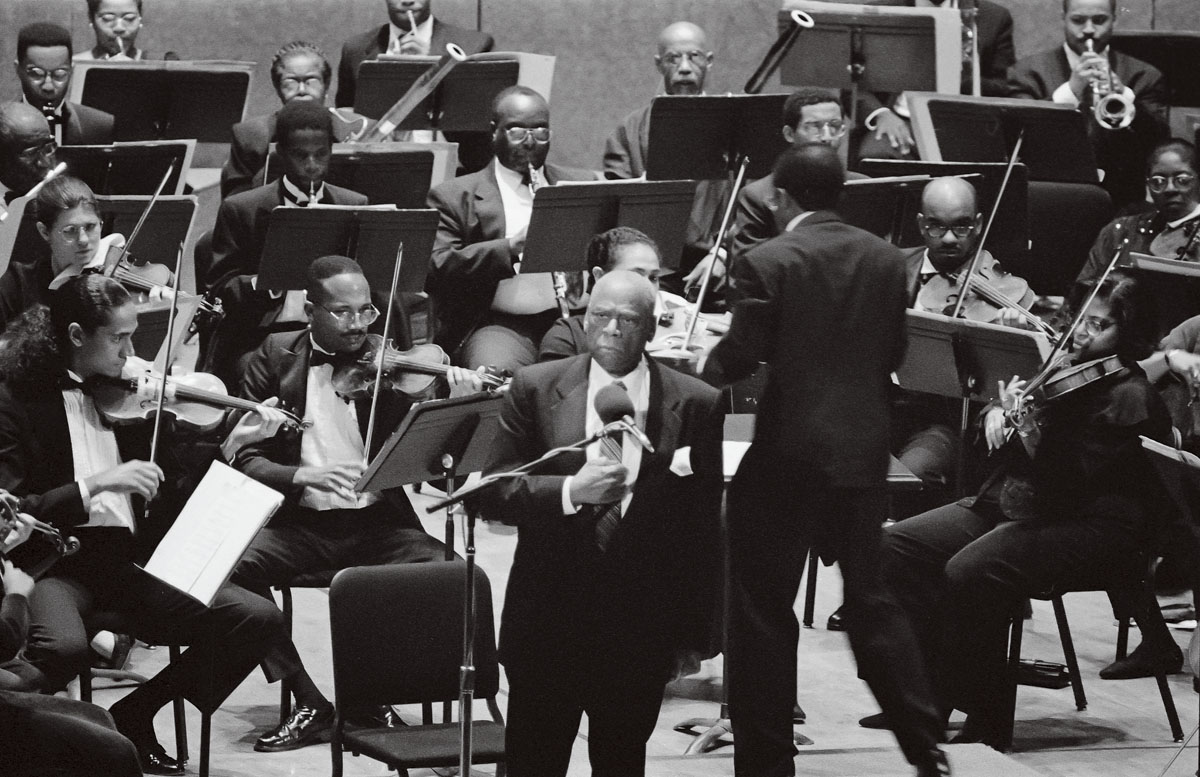 MUSICAL HISTORY: Concert baritone William Warfield ’42E (center) performed at the festival in the 1990s. Other noted past performers include violinist Sanford Allen, harpist Ann Hobson Pilot, horn player Jerome Ashby, and pianists Paul Badura-Skoda and Awadagin Pratt. (Photo: University Libraries/Department of Rare Books, Special Collections, and Preservation)
MUSICAL HISTORY: Concert baritone William Warfield ’42E (center) performed at the festival in the 1990s. Other noted past performers include violinist Sanford Allen, harpist Ann Hobson Pilot, horn player Jerome Ashby, and pianists Paul Badura-Skoda and Awadagin Pratt. (Photo: University Libraries/Department of Rare Books, Special Collections, and Preservation)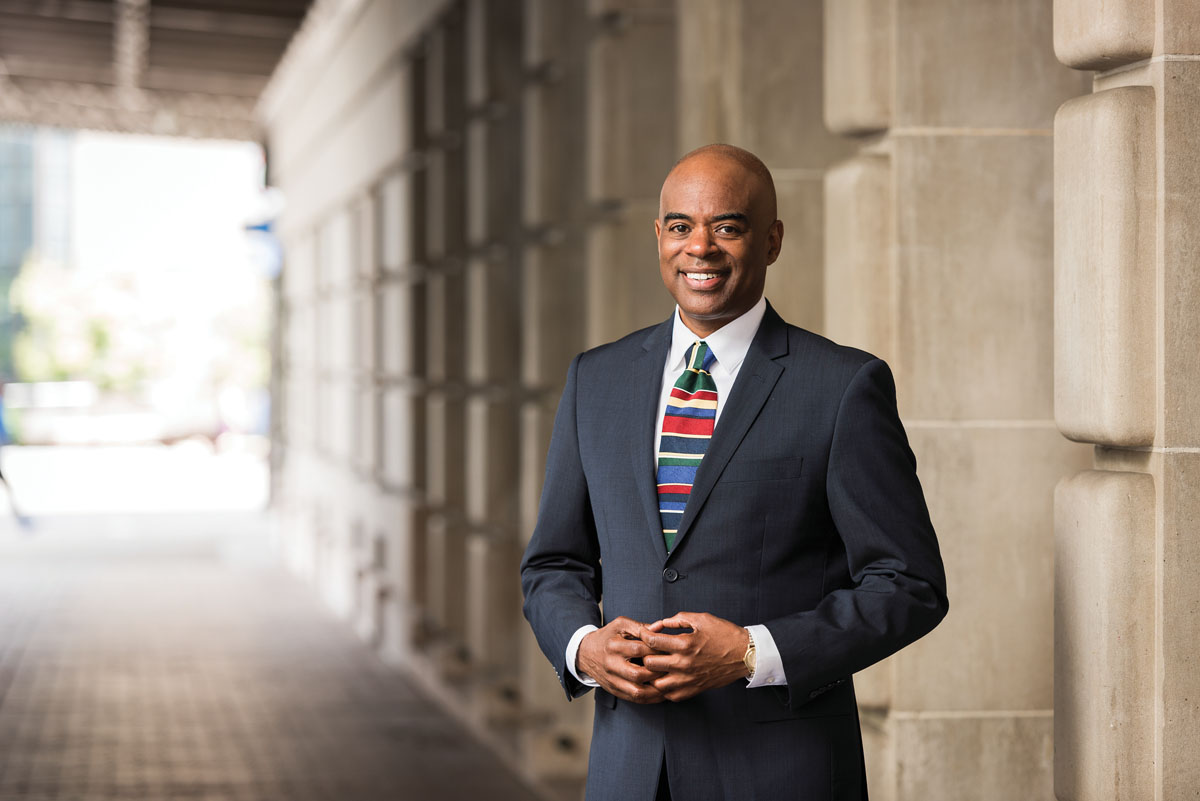 LOOKING AHEAD: Pianist Lee Koonce ’96E (MM) is the first president and artistic director of Gateways. He says his experience as a classical musician of African descent was one of isolation. “There’s such an intense conversation right now about diversity in classical music,” he says. (Photo: Adam Fenster)
LOOKING AHEAD: Pianist Lee Koonce ’96E (MM) is the first president and artistic director of Gateways. He says his experience as a classical musician of African descent was one of isolation. “There’s such an intense conversation right now about diversity in classical music,” he says. (Photo: Adam Fenster)Friday, June 15, 2018
Poor People’s Campaign
A crowd at the Midwest segment of the Poor People’s Campaign in Columbus, Ohio, on May 13, 1968. (AP Photo)
10 Reasons to Revive the 1968 Poor People’s Campaign
By Sarah Anderson
Inspired by an initiative cut short by the assassination of Dr. Martin Luther King Jr., moral leaders are planning a wave of civil disobedience.
When profit motives “are considered more important than people,” Dr. Martin Luther King Jr. once declared, it’s time for the nation to “undergo a radical revolution of values.”
To bring about that revolution, King and other leaders announced plans in December 1967 for a Poor People’s Campaign that would mobilize disadvantaged people across racial and geographic lines. Four months later, an assassin’s bullet prevented the campaign from reaching its full potential.
Today, 50 years later, we have a chance for a do-over. And do we ever need it.
At a press event today in Washington, DC, two prominent faith leaders—the Rev. Liz Theoharis and the Rev. Dr. William J. Barber II—announced plans for a new multi-issue, multiracial Poor People’s Campaign to recapture the revolutionary spirit of 1968. As the campaign’s co-chairs, they’ve been traveling the country for months, holding mass meetings and strategy sessions in 15 cities to lay the groundwork for mobilizations in the spring of 2018.
For those who may doubt the need for such a campaign, a new Institute for Policy Studies report provides more than ample evidence. By many measures, what King called the “evils of racism, economic exploitation, and militarism” are worse today than they were five decades ago. Toss in climate change and other environmental threats, and the picture is even more grim.
Here are just 10 of the numerical lowlights of the past 50 years:
1. Since 1968, the number of Americans below the official poverty line has increased by 60 percent to 40.6 million. While poverty rates are highest among African Americans and Latinos, white people make up the largest number of the country’s poor (17.3 million).
2. The top 1 percent’s share of national income has nearly doubled since 1968 while the official poverty rate for all US families has merely inched up and down. A key driver of this growing economic divide is the steep drop in unionization, from 24.9 percent of workers in 1968 to 10.7 percent in 2016. Income concentration at the top has siphoned resources from those at the bottom and distorted our democracy.
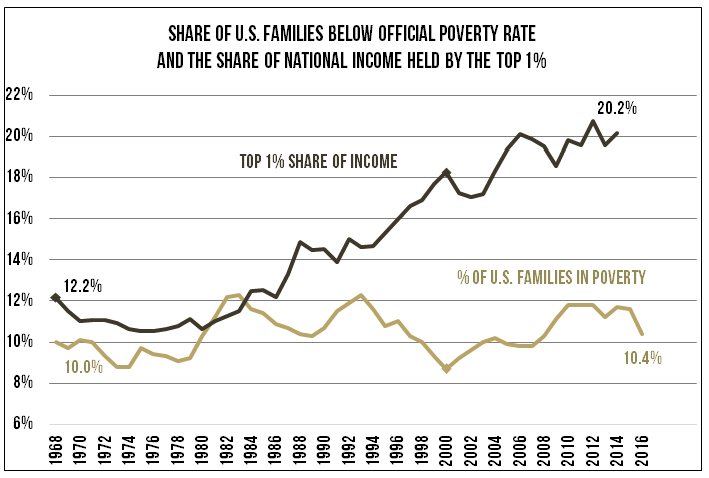
3. After some gains under President Johnson’s “War on Poverty,” the social safety net has taken a beating, with particularly devastating impacts on single mothers and children. In the richest country in the world, 30.6 million children (43 percent) live at or below 200 percent of the poverty line, considered the minimum for meeting basic family needs. Female-headed families are 5.4 times more likely to be living in poverty than families headed by married couples.
4. More than 50 years after the Voting Rights Act, people of color still face a broad range of barriers to democracy, including racist gerrymandering and redistricting, felony disenfranchisement, and laws designed to make it harder to vote. According to the Brennan Center for Justice, 23 states have adopted various forms of voter-suppression laws since 2010, with more restrictive voter-ID laws being the most common.
5. Since 1976, the criminalization of poverty has driven up federal spending on prisons tenfold to $7.5 billion this year. The number of state and federal prison inmates of all races grew from 188,000 in 1968 to 1.5 million in 2015. Racial profiling and biased sentencing and policing practices have expanded the share of inmates who are people of color from less than half in 1978 (the first year for which race data are available) to 66 percent in 2015.
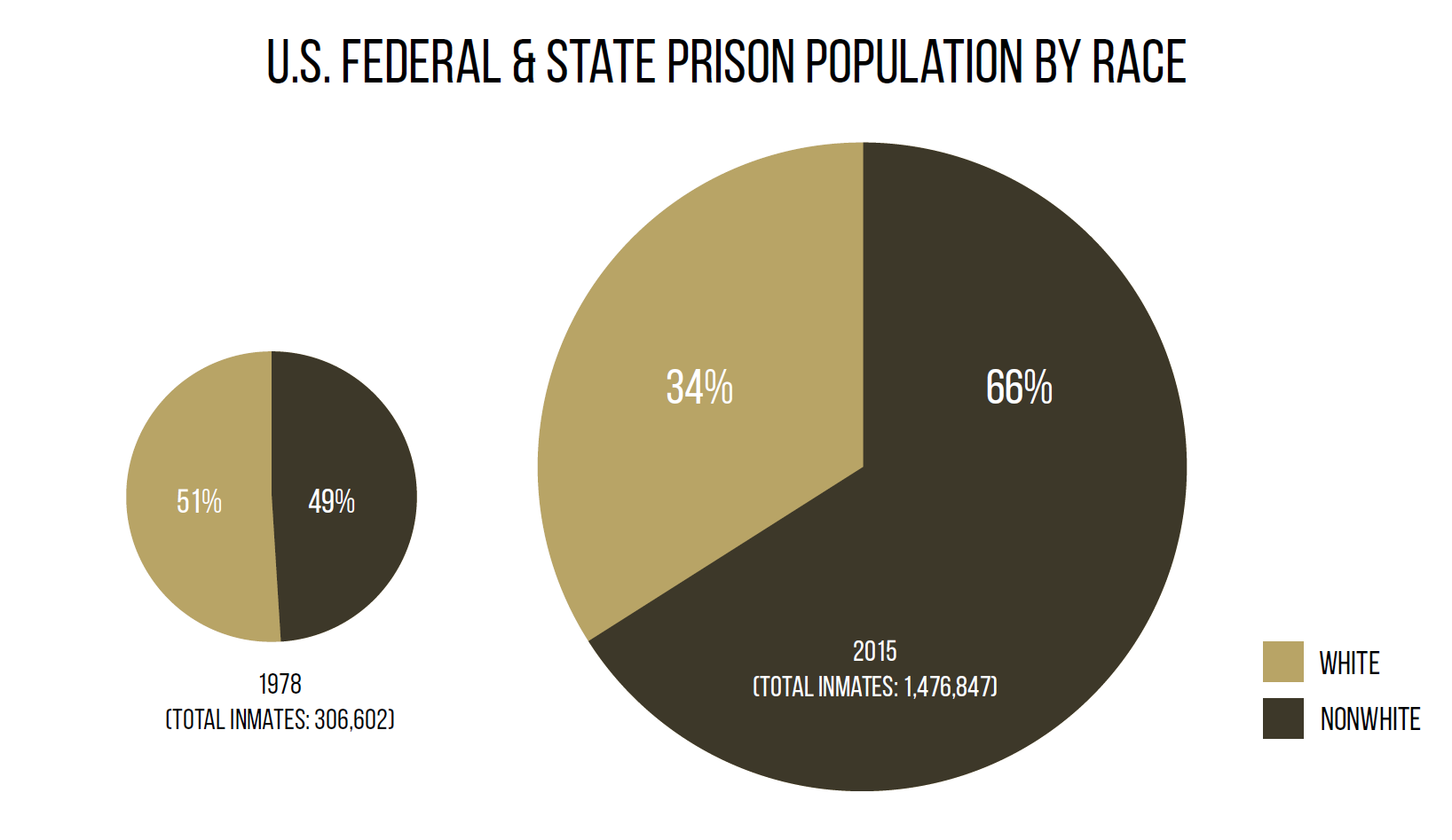
6. Increased scapegoating of immigrants is also reflected in government spending trends. Between 1976 and 2015, federal expenditures on border control and immigration enforcement rose eightfold while the number of deportees grew tenfold to 333,000.
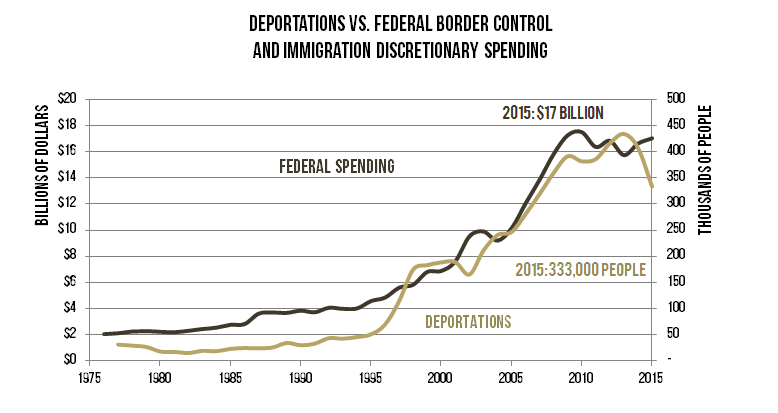
7. Since the height of the Vietnam War, the gap between Uncle Sam’s military and anti-poverty spending has gone even more out of whack. Back then, federal spending on the military amounted to twice the level of discretionary spending to fight poverty. Today this spending gap is nearly four-to-one. In the meantime, millions of lives have been lost in wars that have made us no safer, while “real security” in the form of good jobs, health care, and quality education remains beyond the reach of millions of Americans.
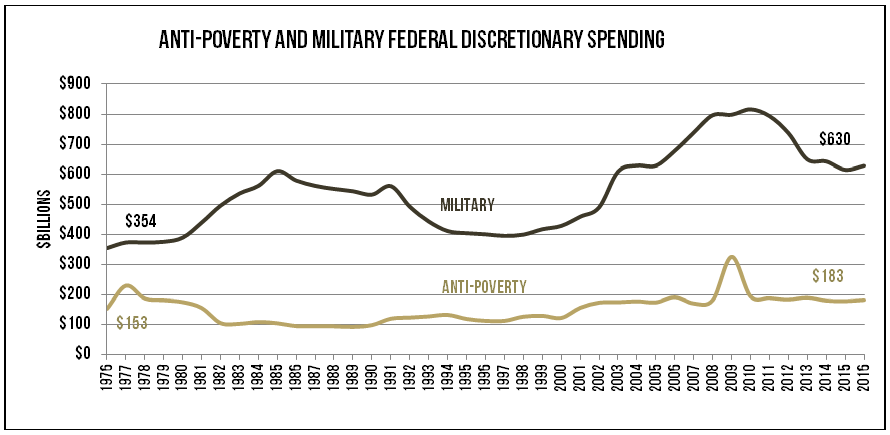
8. Disadvantaged communities here and abroad continue to pay the highest price for American militarism. The poorest 30 percent of US communities suffered 36 percent of the casualties in the Vietnam War and 38 percent in the Iraq War. And while the legal draft of the Vietnam era is no more, it has been replaced with an economic draft. Pentagon data on US casualties from Iraq and Afghanistan reveal that 23 percent came from job-scarce small towns and rural areas that represent only 17 percent of the US population.
9. Since 1968, the environment has become less polluted, but race and income disparities persist in access to clean air and water and exposure to environmental hazards. According to the Centers for Disease Control, at least 4 million families with children are being exposed to high levels of lead from drinking water and other sources. The risks fall heaviest on low-income, African-American, and Latino children, in part because they’re more likely to live in aging, poorly maintained housing.
10. Those who’ve contributed the least to climate change are suffering the most from the related severe weather effects. Low-income families and people of color tend to be more likely to have living conditions and jobs that increase the health risks of extreme heat. They also get hit hardest by natural disasters because of barriers to obtaining property insurance.
The point here, as campaign co-chair Theoharis puts it, is that “even before the election of Donald Trump, the evils of poverty, racism, militarism, and environmental destruction were tearing apart the social fabric in America.” (Theoharis is also co-director of the New York–based Kairos Center.)
And yet with Trump’s racist immigrant bashing and Republican tax and budget plans that would do more to accelerate inequality than any legislation in decades, the need for a modern-day Poor People’s Campaign is even more urgent.
In fact, the GOP tax plan is such a moral abomination that, if adopted, it will likely boost support for the 40 days of coordinated civil disobedience the campaign is planning to kick off on Mother’s Day 2018. Organizers are already expecting tens of thousands of poor and disenfranchised people, clergy, and other leaders to risk arrest in local actions that will feed into a major demonstration at the US Capitol on June 23.
These 50th-anniversary events will not be a commemoration, says Barber, who rose to national prominence as a driving force behind the Moral Mondays Movement. Rather, Barber says, the goal of the new Poor People’s Campaign is to “consecrate a new movement to transform the political, economic, and moral structures of society.”
https://www.thenation.com/article/10-reasons-to-revive-the-1968-poor-peoples-campaign/
Wednesday, May 23, 2018
Sister Rosetta Tharpe
Sister Rosetta Tharpe
Sister Rosetta Tharpe March 20, 1915 – October 9, 1973, a pioneering gospel singer and guitar player from Arkansas, among the 2018 inductees to the Rock and Roll Hall of Fame. She was born in the Woodruff County town of Cotton Plant and achieved fame in the 1930s.
Rock 'n' roll was bred between the church and the nightclubs in the soul of a black woman in the 1940s named Sister Rosetta Tharpe. She was there before Elvis, Little Richard and Johnny Cash swiveled their hips and strummed their guitars. It was Tharpe, the godmother of rock 'n' roll, who turned this burgeoning musical style into an international sensation.
Tharpe was always surrounded by music growing up. Born Rosetta Nubin in Arkansas to Willis Atkins and Katie Bell, Tharpe came from a family of religious singers, cotton pickers and traditional evangelists.Encouraged by her mother, Tharpe began singing and playing the guitar as Little Rosetta Nubin at the age of four and was cited as a musical prodigy.
In the mid-1920s, Tharpe and her mother settled in Chicago, Illinois, where they performed religious concerts at the COGIC church on 40th Street, occasionally traveling to perform at church conventions throughout the country. Tharpe developed considerable fame as a musical prodigy, standing out in an era when prominent black female guitarists were rare. In 1934, at age 19, she married Thomas Thorpe, a COGIC preacher, who accompanied her and her mother on many of their tours. The marriage lasted only a few years, but she decided to adopt a version of her husband's surname as her stage name, Sister Rosetta Tharpe.
Sister Rosetta Tharpe-Documentary
In 1938, she left her husband and moved with her mother to New York City. Although she married several times, she performed as Rosetta Tharpe for the rest of her life. As Tharpe grew up, she began fusing Delta blues, New Orleans jazz and gospel music into what would become her signature style.
On October 31, 1938, aged 23, Tharpe recorded for the first time – four sides for Decca Records, backed by Lucky Millinder's jazz orchestra. The first gospel songs ever recorded by Decca, "Rock Me," "That's All," "My Man and I" and "The Lonesome Road" were instant hits, establishing Tharpe as an overnight sensation and one of the first commercially successful gospel recording artists. "Rock Me" influenced many rock-and-roll singers, such as Elvis Presley, Little Richard, and Jerry Lee Lewis. She had signed a seven-year contract with Reminder and was managed by Mo Galye. Her records caused an immediate furor: many churchgoers were shocked by the mixture of gospel-based lyrics and secular-sounding music, but secular audiences loved them. She played on several occasions with the white singing group the Jordanaires.
She was the first great recording star of gospel music and among the first gospel musicians to appeal to rhythm-and-blues and rock-and-roll audiences, later being referred to as "the original soul sister" and "the Godmother of rock and roll". She influenced early rock-and-roll musicians, including Little Richard, Johnny Cash, Carl Perkins, Chuck Berry, Elvis Presley and Jerry Lee Lewis.
Her guitar playing technique had a profound influence on the development of British blues in the 1960s; in particular a European tour with Muddy Waters in 1963 with a stop in Manchester is cited by prominent British guitarists such as Eric Clapton, Jeff Beck, and Keith Richards.Tharpe pushed spiritual music into the mainstream and helped pioneer the rise of pop-gospel, beginning in 1938 with the recording "Rock Me" and with her 1939 hit "This Train". Her unique music left a lasting mark on more conventional gospel artists such as Ira Tucker, Sr., of the Dixie Hummingbirds. While she offended some conservative churchgoers with her forays into the pop world, she never left gospel music.
Information sources:
www.allmusic.com/artist/sister-rosetta-tharpe-mn0000013511
en.wikipedia.org/wiki/Sister_Rosetta_Tharpe
www.pbs.org/black-culture/shows/list/rock-and-roll-rosetta-tharpe/
www.npr.org/2017/08/24/544226085/forebears-sister-rosetta-tharpe-the-godmother-of-rock-n-roll
Lucky Millinder--Shout Sister Shout with Sister Rosetta Sharpe.wmv
Sister Rosetta Tharpe - This Train
Sister Rosetta Tharpe - Up Above My Head
Friday, May 18, 2018
Stacey Abrams for governor of Georgia
Stacey Yvonne Abrams born December 9, 1973 is an American politician, lawyer, author and businesswoman who was the House Minority Leader for the Georgia General Assembly and State Representative for the 89th House District.She is a member of the Democratic Party.
Georgia House Minority Leader Stacey Abrams is a rising star in the Democratic Party, and it’s not hard to see why. Her vision of expanding the Democratic electorate by mobilizing the state’s considerable population of nonvoters and minority voters is an appealing road map for a national party eager to turn Georgia blue.
Abrams believes her success registering voters with the nonprofit New Georgia Project and her experience limiting conservative overreach as a Democratic leader equip her to go toe-to-toe with the GOP-dominated legislature as governor. And she hopes to bring Georgians the employment, education and health care opportunities available to working families in other, bluer states.
Speech to Pave it Blue
I want to follow up on the note Congressman John Lewis sent about how together, one week from today, we can shatter a glass ceiling.
Stacey Abrams is running for governor of Georgia. And when she wins, she'll be the first Black woman ever elected governor of any state. Her leadership will move the South, and in turn, the nation, forward.
I know Stacey, and she inspires me and gives me hope for the future—from her efforts on criminal-justice reform and voting rights to blocking Republican attempts to undermine the economic security of working families.
That's why I'm joining with MoveOn, Rep. Lewis, and many others today for a moneyblast for Stacey Abrams. We're counting on thousands of people across the country chipping in $3—or whatever they can afford—and MoveOn has set an ambitious goal of raising $100,000 in one day to power her campaign to victory in the primary next Tuesday. Will you join us?
Tuesday, May 15, 2018
Monday, April 16, 2018
Roland Martin: Be A Part Of The Poor People’s Campaign
Roland Martin: Be A Part Of The Poor People’s Campaign: This year marks the 50th Anniversary of the Poor People’s Campaign which is dedicated to uniting people all over the country to come against racism, poverty, war economy, ecological destructi…
Tuesday, April 10, 2018
Monday, April 2, 2018
GLADYS WEST- BEHIND THE CREATION OF THE GPS SYSTEM
GLADYS WEST, ONE OF THE 'HIDDEN FIGURES' BEHIND THE CREATION OF THE GPS SYSTEM
You may not know Gladys West, but her calculations revolutionized navigation.
She is one of the mathematicians responsible for developing the global positioning system, better known as GPS.
Like many of the black women responsible for American achievements in math and science, West isn't exactly a household name. West was one of only four black employees at the Naval Proving Ground in 1956. She accepted a position at the Dahlgren, Virginia, facility doing calculations, with her early work focusing on satellites. West also programmed early compute d in the development of GPS.
Gladys Mae Brown,born 1931 in Dinwiddie, VA. As a girl growing up in Dinwiddie County south of Richmond, all Gladys Mae Brown knew was that she didn’t want to work in the fields, picking tobacco, corn and cotton, or in a nearby factory, beating tobacco leaves into pieces small enough for cigarettes and pipes, as her parents did.
“I realized I had to get an education to get out,” she said. When she learned that the valedictorian and salutatorian from her high school would earn a scholarship to Virginia State College (now University), she studied hard and graduated at the top of her class. She studied mathematics at Virginia State College. In 1956 she began to work at Naval Surface Warfare Centerwas Dahlgren Division, where she was the second black woman ever to be employed. She met her husband Ira West at the naval base a mathematician named Ira West.The two dated for 18 months before they married in 1957.
While he spent most of his career developing computer programs for ballistic missiles launched from submarines, her calculations eventually led to satellites.
Gladys West collect data from satellites, eventually leading to the development of the Global Positioning System. Her supervisor recommended her as project manager for the Seasat radar altimetry project, the first satellite that could remotely sense oceans. In 1979, Gladys West was recommended for commendation. Mrs.West was a programmer in the Dahlgren Division for large-scale computers and a Project Manager for data processing systems used in the analysis of satellite data.
In 1986, Mrs West published "Data Processing System Specifications for the Geosat Satellite Radar Altimeter", a 60-page illustrated guide. The Naval Surface Weapons Center (NSWC) guide was published to explain how to increase the accuracy of the estimation of "geoid heights and vertical deflection", topics of satellite geodesy. This was achieved by processing the data created from the radio altimeter on the Geosat satellite which went into orbit on 12 March 1984. She worked at Dahlgren for 42 years.
Today, West lives in King George County, Virginia. Her contributions to GPS were only uncovered when a member of West's sorority, Alpha Kappa Alpha, read a short biography West had submitted for an alumni function. West is completing a PhD via a distance learning program with Virginia Tech.
Calculating the Future
Honoring Gladys West
Information sources:
Wikipedia, the free encyclopedia
www.becauseofthemwecan.com/blogs/
www.fredericksburg.com/features/gladys-west
www.upworthy.com/you-may-not-know-gladys-west
Saturday, March 31, 2018
Wednesday, March 28, 2018
Sunday, March 25, 2018
Rev. Dr. William Barber: ‘Nothing Would Be More Tragic
Rev. Dr. William Barber: ‘Nothing Would Be More Tragic Than For Us To Turn Back Now’
Rev. Dr. William J. Barber II, President of Repairers of the Breach and a recipient of the 2018 North Star Award delivered a rousing acceptance speech during this year’s National CARES Mentoring Movement Gala.
During his remarks, Rev. Barber told Black America, “My brothers and sisters we are a people that have come from worst than what we see now and nothing would be more tragic than for us to turn back now.”
“Don’t you ever let it come out of your mouth that we’ve never seen anything this bad; that we’ve never seen racism in the White House.” Barber continued, “Don’t you even dare let your children hear you utter that because we came through 250 years of slavery and 100 years of legalized Jim Crow — nothing would be more tragic than for us to turn back now.”
Rev. Barber diagnosed what the world is witnessing in the White House and Congress a s a “moral malady.”
“We’re going backwards rather than forwards,” Rev. Barber said. “The Voting Rights Act has been gutted. 52 years later we have less voting rights than we had August 6th 1965."
In addressing poverty in America, the President of the Repairers of the Breach said, “There are over 140 million people [that are] poor and working poor in this country. The majority of them are white, not Black. The majority of them are women and children.”
In closing, Barber announced a 40-day build up to an initiative called the "Souls of Poor Folks" that will confront lawmakers and "reset the moral narrative."
Sunday, March 18, 2018
Reverend Dr. William Barber Delivers Masterful History Lesson
Reverend Dr. William Barber - Delivers Masterful History Lesson, Declares 'It's Movement Time Again'
Roland S. Martin
Published on Feb 8, 2018
Rev. William Barber delivered the benediction at the close of #RolandMartinUnfiltered Presents: The State Of Our Union.
During his closing remarks, Rev. Barber addressed our current political climate, the lack of morality in it, the existence racial animus and the browning of America.
Barber offered a masterful history lesson dissecting the reconstruction period, civil rights era and our not so distant past.
The President of Repairers of the Breach chastised those in America whose intent is to reverse the progress African Americans, women and progressives have made over the course of the last 100 years.
Barber began his commentary reading a passage from Ezekiel 22, out of what he called the “Millennial version” of the Bible.
Barber began with the premise that God was angry because priests were “desecrating” his holy things. He continued, “Your politicians have become like wolves — prowling and killing and taking whatever they want.”
“And your preachers are covering up for the politicians by pretending to have received visions and revelations; they say this is what God says and I God have not said a thing.”
“And because your politicians are like wolves, and your preachers are covering up for your politicians; extortion is rife; robbery is epidemic; the poor and the needy are being abused; and the immigrants and the strangers are being kicked around at will with no access to justice.”
-
NOW AVAILABLE: "Shelly, Go To My iPad" / #BringTheFunk tees - http://ow.ly/dlBA30hm1Ra
We have some amazing things coming your way in 2018 and beyond. Sign up for the Roland Martin Mailing List http://ow.ly/2Yvq30hnc87
Listen, download and subscribe to the ALL NEW Roland Martin Unfiltered Audio Podcast on iTunes http://ow.ly/Hctl30eeN19
Visit Roland Martin's NEW digital lifestyle and information website http://AllThat.tv
Hit the thumbs up button and subscribe to the channel to see more content like this. http://bit.ly/2ubQ9NV
Follow Roland Martin on the following social media platforms:
Facebook: http://bit.ly/2dgI2GO
Twitter: http://bit.ly/2dgFOra
Instagram: http://bit.ly/2d48Acu
For more info about Roland visit http://www.rolandsmartin.com
Roland Martin Podcast on iTunes: http://apple.co/2iado2r







